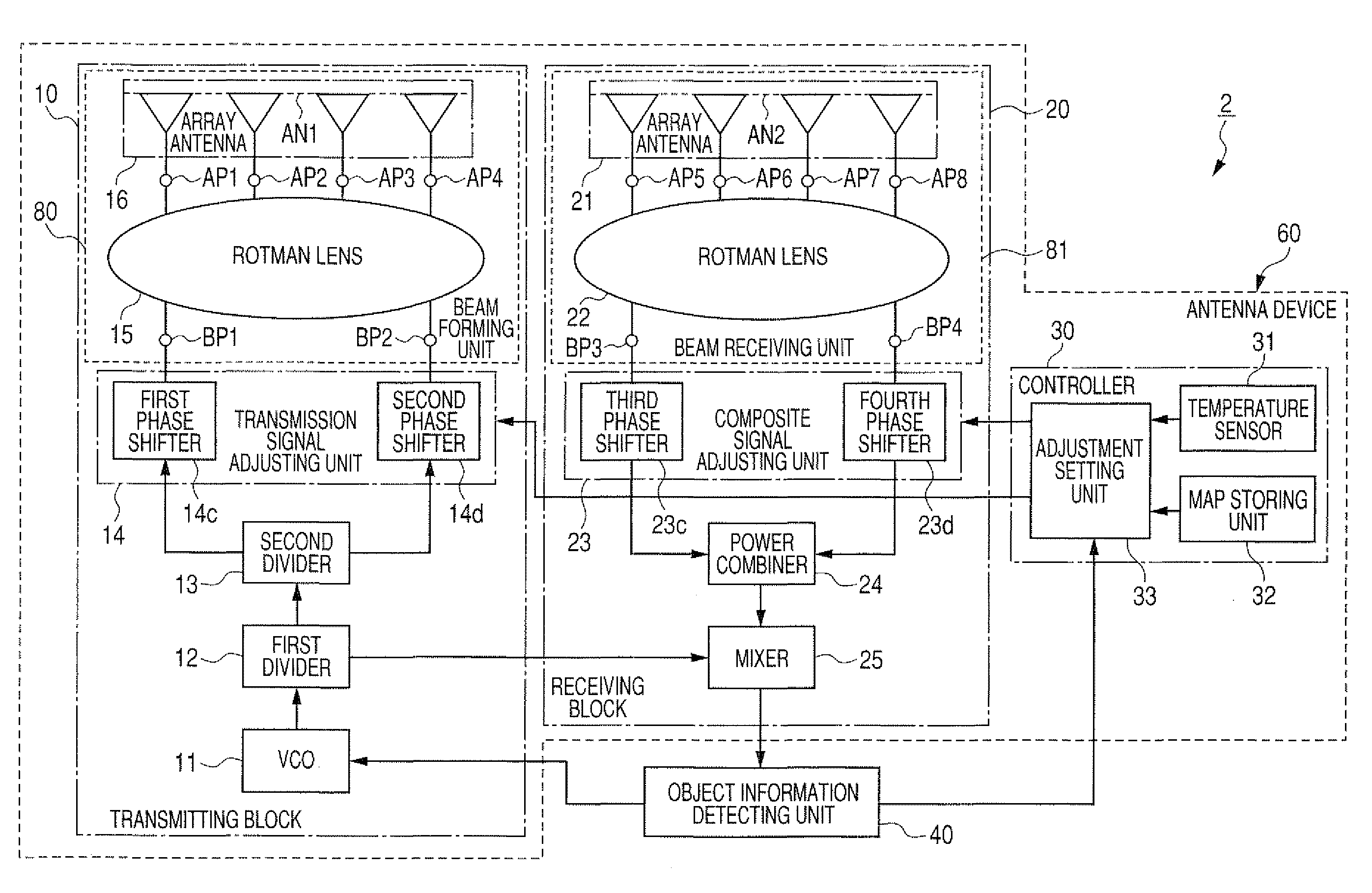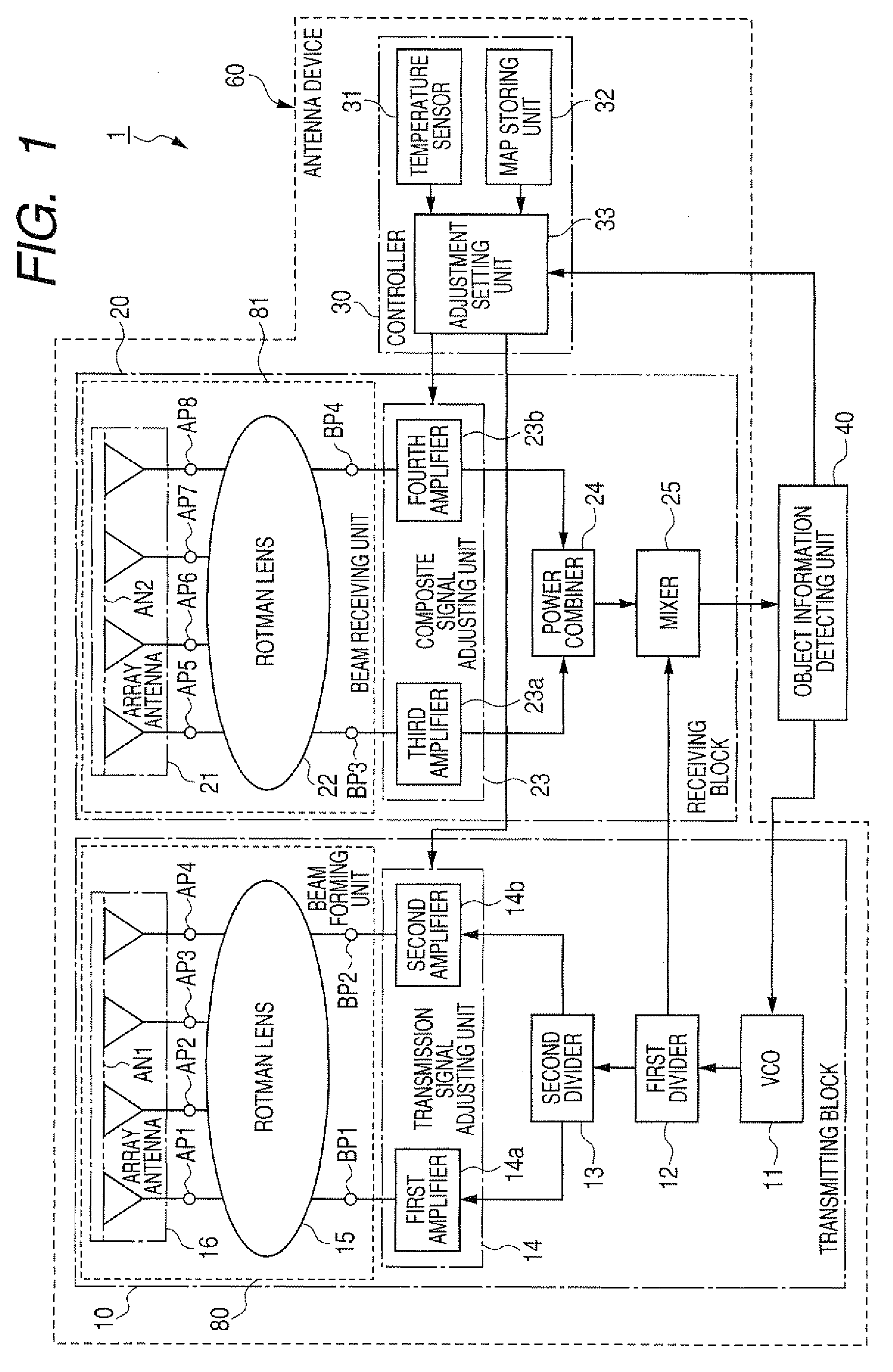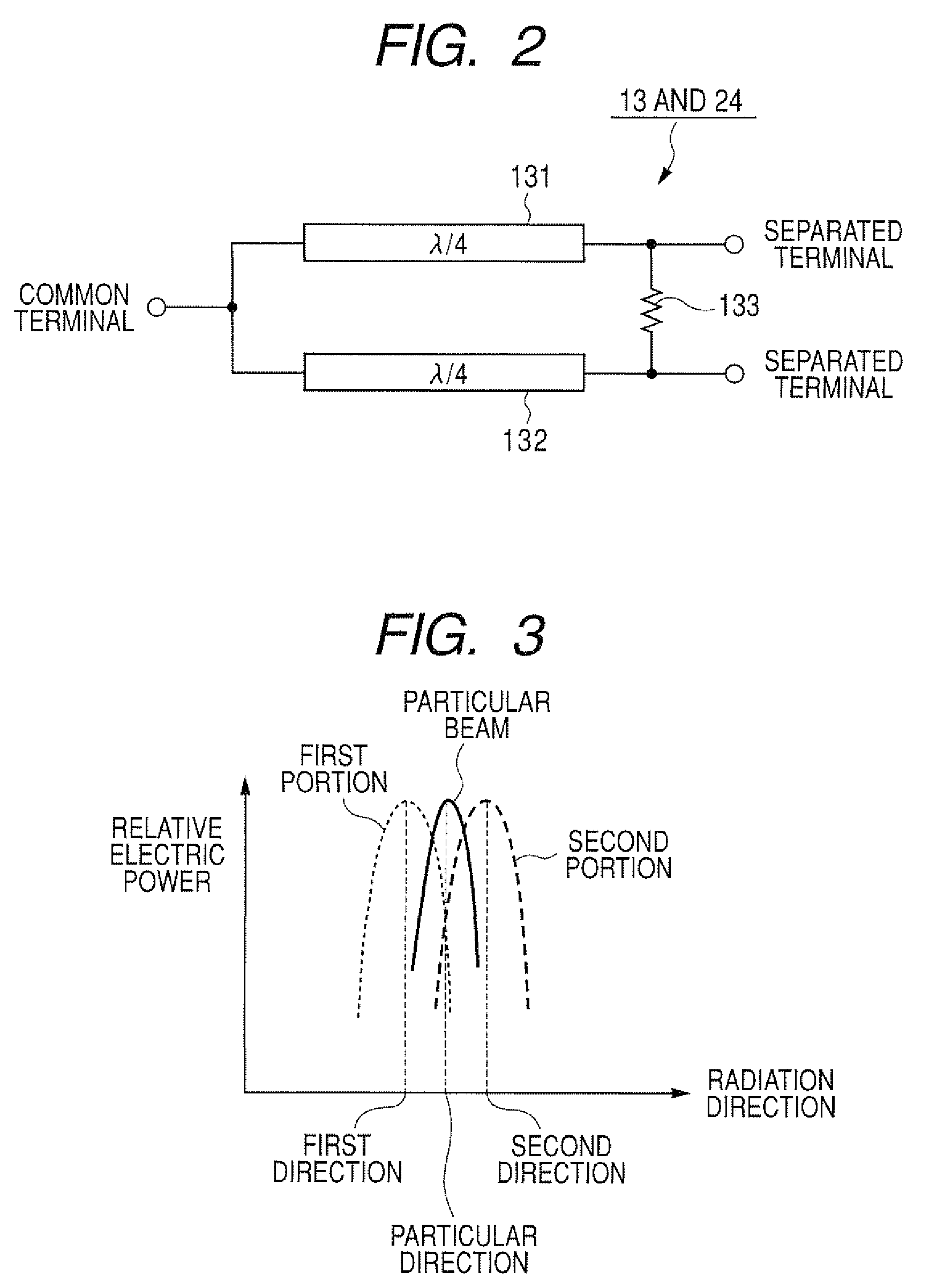Antenna device with lens or passive element acting as lens
a technology of passive elements and antenna devices, applied in antennas, antenna details, electrical devices, etc., can solve the problems of increasing the size of the rotman lens, unable to manufacture a small-sized antenna device, and undetected low resolution
- Summary
- Abstract
- Description
- Claims
- Application Information
AI Technical Summary
Benefits of technology
Problems solved by technology
Method used
Image
Examples
first embodiment
[0043]An antenna device disposed in a radar apparatus will be described. FIG. 1 is a block diagram of a radar apparatus having an antenna device according to the first embodiment.
[0044]As shown in FIG. 1, a radar apparatus 1 has an antenna device 60 for forming and radiating a radar beam and receiving the radar beam from an object, which reflects the radiated beam toward the device 60, and an object information detecting unit 40.
[0045]The antenna device 60 has a transmitting block 10 for transmitting a radar beam of frequency-modulated continuous waves (FMCW) having directivity according to a transmission signal while changing the radiation direction of the beam in a predetermined cycle within a predetermined direction range, a receiving block 20 for receiving the radar beam reflected by the object and producing a reception signal, indicating information about the object, from the received beam, and a beam controller 30 for controlling the transmitting block 10 to adjustably set the...
second embodiment
[0104]FIG. 7 is a block diagram of a radar apparatus having an antenna device according to the second embodiment. As shown in FIG. 7, a radar apparatus 3 differs from the radar apparatus 1 according to the first embodiment in that an antenna device 61 of the radar apparatus 3 has a beam forming unit 82 of a transmitting block 110 in place of the unit 80 and has a beam receiving unit 83 of a receiving block 120 in place of the unit 81.
[0105]The forming unit 82 has a transmission array antenna 17 and a dielectric convex lens 18. The antenna 17 has two antenna elements connected with the respective amplifiers 14a and 14b. The lens 18 has a first input surface (i.e., first input portion) 1a, a second input surface (i.e., second input portion) lab and an antenna surface AN3 acting as an output portion of the unit 82. The antenna elements of the antenna 17 are disposed to be symmetric to each other with respect to the optical axis (i.e., center axis) of the lens 18. These antenna elements...
third embodiment
[0119]FIG. 9 is a block diagram of a radar apparatus having an antenna device according to the third embodiment. As shown in FIG. 9, a radar apparatus 5 differs from the radar apparatus 1 according to the first embodiment in that an antenna device 62 of the radar apparatus 5 has a transmitting and receiving block 50 in place of the blocks 10 and 20. The block 50 has the VCO 11, the dividers 12 and 13, the adjusting unit 14, a beam forming and receiving unit 84, the adjusting unit 23, the combiner 24 and the mixer 25.
[0120]The unit 84 has a Rotman lens 52 and an array antenna 51. The lens 52 has two transmission beam ports BP (BP1 and BP2), a plurality of antenna ports AP (e.g., four antenna ports AP1, AP2, AP3 and AP4) and two reception beam ports BP (BP3 and BP4). The lens 52 is a passive element acting as a lens. The beam ports BP1 and BP2 (i.e., input portions) are placed on the first side of the lens 52 and are spaced from each other at a predetermined interval. The beam ports B...
PUM
 Login to View More
Login to View More Abstract
Description
Claims
Application Information
 Login to View More
Login to View More - R&D
- Intellectual Property
- Life Sciences
- Materials
- Tech Scout
- Unparalleled Data Quality
- Higher Quality Content
- 60% Fewer Hallucinations
Browse by: Latest US Patents, China's latest patents, Technical Efficacy Thesaurus, Application Domain, Technology Topic, Popular Technical Reports.
© 2025 PatSnap. All rights reserved.Legal|Privacy policy|Modern Slavery Act Transparency Statement|Sitemap|About US| Contact US: help@patsnap.com



